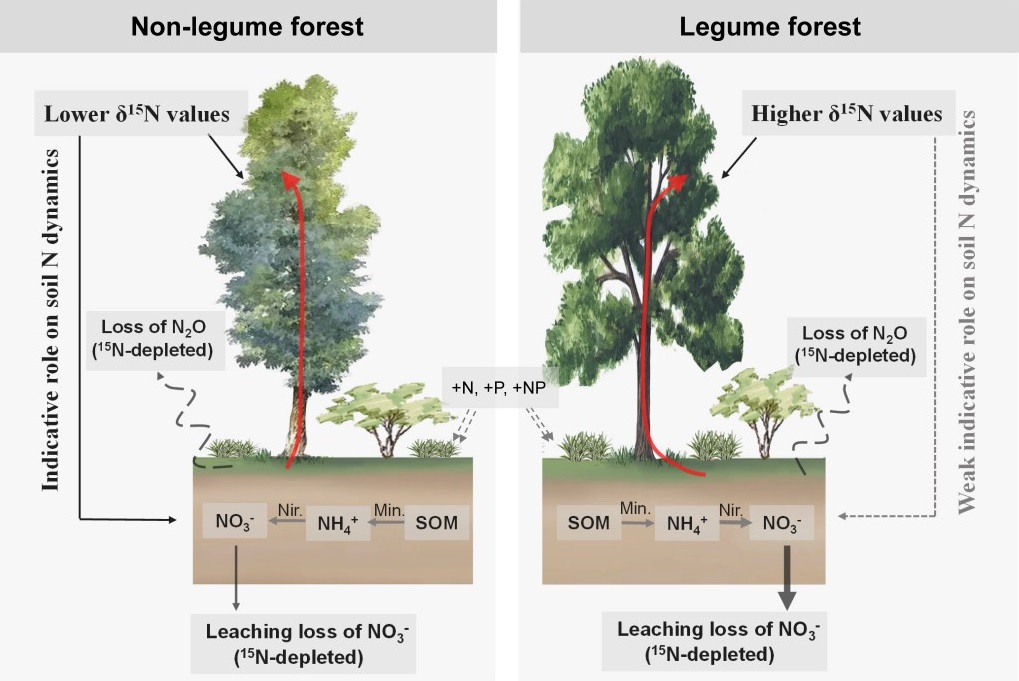Different indicative roles of stable nitrogen isotope in soil N dynamics of tropical leguminous and non-leguminous forests following nutrient addition
Nitrogen (N) cycling is a critical biogeochemical process in terrestrial ecosystems that is difficult to directly expound because of its complexity with multiple transformation processes and feedback. Nitrogen isotopes of plants and soil integrate information on ecosystem N-cycling, which has been widely applied in the study of terrestrial ecosystem N-cycling and status. However, the effects of N and Phosphorus (P) addition on δ15N values and their indicative roles in N-cycling in legume-dominated tropical forests remain poorly understood.
To examine how individual and combined N and P application affect the N concentration (%N) and stable N isotope ratio (δ15N) in the leaf–litter–soil continuum in leguminous (Acacia auriculiformis-dominant; AA) and non-leguminous (Eucalyptus urophylla-dominant; EU) plantations in southern China, Dr. Jinhua Mao and others from the research group of Ecosystem Management (Principal Investigator: Dr. Mianhai Zheng) of South China Botanical Garden, Chinese Academy of Sciences, compared leguminous and non-leguminous forests in terms of N concentration and δ15N in the leaf–litter–soil continuum under long-term N and P addition. The results showed that the plants in both tropical forests were found to be 15N-depleted. N addition significantly increased the foliage δ15N in understorey species in the non-leguminous but not the leguminous forest. In both forests, the addition of N resulted in an increase in nitrate (NO3-) leaching and nitrous oxide (N2O) emission. Conversely, P addition led to a decrease in NO3- leaching and N2O emission. Additionally, foliage δ15N was positively correlated with soil N loss rates (N2O emission and NO3- leaching) in the non-leguminous forest but showed no correlation in the leguminous forest. These results emphasize the necessity of distinguishing legumes from non-legumes when using 15N signals to interpret ecosystem N-cycling characteristics, particularly in tropical regions with abundant leguminous species. It is also necessary to identify compatible indicators of the ecosystem N status in legume forests in other regions.
This study, entitled ‘Different indicative roles of stable nitrogen isotope in soil N dynamics of tropical leguminous and non-leguminous forests following nutrient addition’, was published online in Plant and Soil. (https://doi.org/10.1007/s11104-024-06523-y )

File Download: